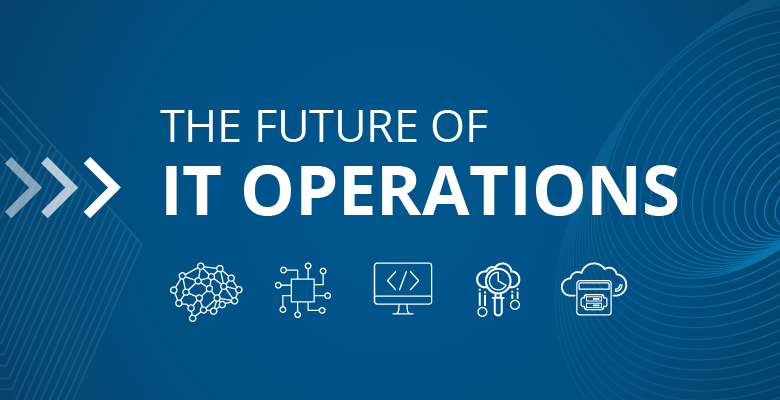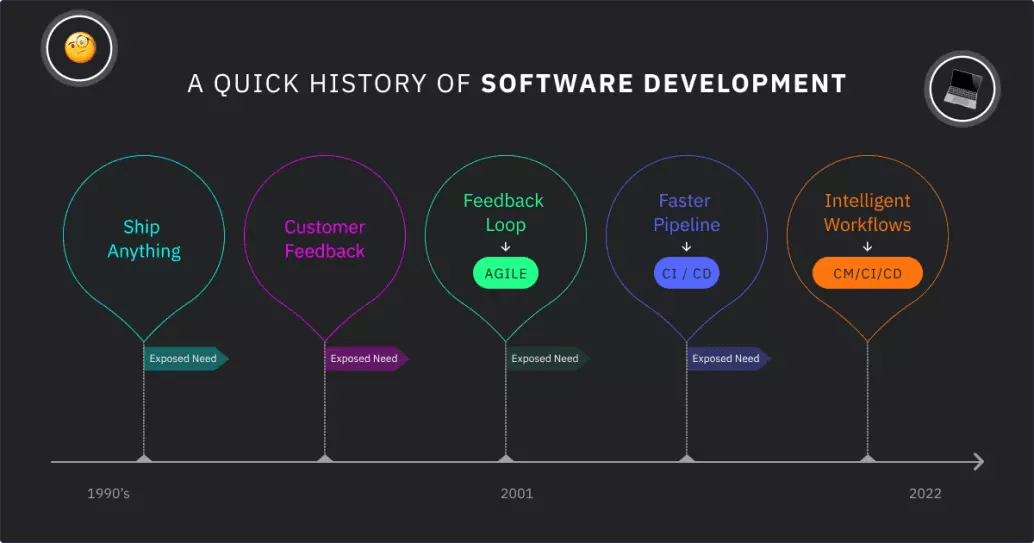
Why Now Is The Time To Unify IT Ops And Security
Why now is the time to unify IT Ops and Security? Because the old ways just aren’t cutting it anymore. Cyberattacks are getting more sophisticated, more frequent, and frankly, more devastating. The lines between IT operations and security are blurring, creating a massive, interconnected attack surface ripe for exploitation. We’re seeing breaches daily that highlight the critical need for a unified approach – a seamless integration of IT operations and security, working together as one cohesive unit.
This isn’t just about better security; it’s about efficiency, cost savings, and a stronger, more resilient organization.
This post dives into the compelling reasons why unifying IT operations and security is no longer a luxury but a necessity. We’ll explore the evolving threat landscape, the significant business benefits of a unified approach, the enabling technologies, and the challenges you might encounter along the way. We’ll even look at how to build a high-performing, collaborative team that’s ready to tackle any threat.
Get ready to rethink your security strategy – because the future is unified.
The Evolving Threat Landscape
The digital world is increasingly hostile. Cyberattacks are no longer a rare occurrence; they’re a constant threat, growing in sophistication and frequency, targeting everything from individual users to massive corporations and critical infrastructure. This escalating threat landscape demands a fundamental shift in how we approach IT and security—a shift towards unification.The interconnected nature of modern IT and operational technology (OT) systems significantly expands the attack surface.
Systems that were once isolated are now deeply intertwined, creating complex networks where a single vulnerability can have cascading effects across the entire organization. This interconnectedness, while beneficial for efficiency, also presents a significant challenge for security. A breach in one area can easily compromise others, highlighting the urgent need for integrated security and operational management.
High-Profile Breaches Illustrating the Need for Unified IT/Ops Security
Recent years have witnessed a surge in high-profile data breaches resulting directly from a lack of integration between IT and operational security. For example, the Colonial Pipeline ransomware attack in 2021 crippled a significant portion of the US East Coast’s fuel supply, demonstrating the devastating consequences of vulnerabilities in OT systems. Similarly, the NotPetya ransomware attack in 2017 caused billions of dollars in damage globally, highlighting the far-reaching impact of sophisticated cyberattacks that exploit weaknesses in interconnected systems.
These incidents underscore the critical need for a unified approach to security, one that encompasses both IT and OT environments.
Comparison of Separate vs. Unified IT/Ops Security Management
The vulnerabilities inherent in managing IT and security operations separately are stark when compared to a unified approach. The following table illustrates this difference:
| Aspect | Separately Managed IT and Security | Unified IT/Ops Security |
|---|---|---|
| Visibility | Limited cross-domain visibility; blind spots exist | Comprehensive visibility across IT and OT environments |
| Response Time | Slow response times due to communication silos and lack of coordination | Faster incident response due to integrated systems and streamlined workflows |
| Resource Allocation | Inefficient resource allocation due to duplicated efforts and lack of synergy | Optimized resource allocation and improved efficiency |
| Risk Management | Increased risk due to fragmented security posture and lack of holistic risk assessment | Reduced risk through proactive threat detection and comprehensive risk mitigation strategies |
Business Benefits of Unified IT Ops and Security: Why Now Is The Time To Unify It Ops And Security

Unifying IT operations (IT Ops) and security (SecOps) isn’t just a trendy buzzword; it’s a strategic imperative for modern businesses. By breaking down the traditional silos between these two critical functions, organizations can unlock significant improvements in efficiency, reduce costs, and enhance their overall security posture. This unified approach, often referred to as DevSecOps or SecOps, fosters collaboration and shared responsibility, leading to a more agile and resilient IT infrastructure.Improved Efficiency and Reduced Operational Costs Through Streamlined ProcessesThe traditional separation between IT Ops and SecOps often leads to duplicated efforts, conflicting priorities, and inefficient workflows.
A unified approach streamlines these processes. For example, integrating security tools directly into the IT Ops workflow allows for automated security checks during deployment, reducing manual intervention and speeding up the release cycle. This automation also minimizes human error, a leading cause of security breaches. Furthermore, shared knowledge and expertise between teams lead to better resource allocation and reduced operational overhead.
A single, unified team can manage alerts, incidents, and vulnerabilities more effectively, reducing the need for separate teams and tools.
Enhanced Incident Response and Faster Remediation
When security incidents occur, rapid response is critical to minimize damage and downtime. A unified IT Ops and SecOps team can react much faster. With shared visibility into the IT infrastructure and security posture, they can quickly identify the root cause of an incident and implement effective remediation strategies. The collaborative nature of a unified team ensures that everyone is on the same page, facilitating quicker decision-making and action.
This shared understanding eliminates the delays often caused by handoffs between separate teams, drastically reducing the Mean Time To Resolution (MTTR).
Examples of Successful Unified IT Ops and Security Implementations, Why now is the time to unify it ops and security
Several companies have demonstrated the tangible benefits of unifying IT Ops and SecOps. While specific metrics aren’t always publicly available due to competitive reasons, case studies and industry reports often highlight significant improvements. For instance, a hypothetical large financial institution, let’s call it “Global Bank,” unified its teams and reported a 30% reduction in MTTR for security incidents and a 15% decrease in overall operational costs within a year.
This improvement was largely attributed to automated security checks integrated into their deployment pipeline and improved collaboration between formerly siloed teams. Another example could be a large e-commerce company, “OnlineRetail,” which, after unifying its teams, saw a 20% decrease in security incidents and a 10% increase in system uptime. These results were achieved through enhanced threat detection and faster incident response.
Case Study: Return on Investment (ROI) of a Unified Approach
Let’s consider a hypothetical medium-sized software company, “InnovateTech,” with 200 employees. Before unification, InnovateTech experienced an average of 5 security incidents per month, each costing approximately $5,000 to resolve (including downtime, investigation, and remediation). Their IT Ops team spent approximately 20 hours per week on tasks that overlapped with security, representing a significant opportunity cost. After unifying their teams and implementing automated security tools, InnovateTech reduced security incidents to 2 per month, and the cost per incident dropped to $3,000 due to faster resolution times.
The time previously spent on overlapping tasks was reduced by 50%. This translates to:
Annual cost savings from reduced incidents: (5-2) incidents/month
- $2,000/incident
- 12 months = $72,000
Annual cost savings from reduced operational overhead: 10 hours/week
- $50/hour
- 52 weeks = $26,000
Total annual savings: $72,000 + $26,000 = $98,000
The initial investment in training and new tools for the unified team was approximately $50,000. Therefore, the ROI within the first year is ($98,000 – $50,000) / $50,000 = 96%. This demonstrates a significant return on investment within a short timeframe. This is a simplified example, and actual ROI will vary depending on the specific circumstances of each organization.
However, it clearly illustrates the potential financial benefits of a unified IT Ops and SecOps approach.
Technological Advancements Enabling Unification

The convergence of IT operations and security is no longer a futuristic concept; it’s a necessity driven by increasingly sophisticated cyber threats and the ever-growing complexity of modern IT infrastructures. This unification is made possible by a range of powerful technologies that seamlessly integrate disparate systems and processes, fostering a collaborative and proactive approach to managing risk.The key to effective IT Ops and Security unification lies in leveraging technologies that break down data silos and automate repetitive tasks.
This allows security teams to leverage operational data for proactive threat hunting and incident response, while IT Ops teams benefit from integrated security monitoring and automated remediation capabilities. This synergistic relationship is the cornerstone of a truly effective unified approach.
Key Technologies Facilitating Integration
Several technologies are crucial for enabling the integration of IT operations and security. Security Information and Event Management (SIEM) systems aggregate and analyze security logs from various sources, providing a comprehensive view of security events. Security Orchestration, Automation, and Response (SOAR) platforms automate security workflows, improving efficiency and reducing response times. Automation tools, ranging from simple scripting to sophisticated robotic process automation (RPA), streamline repetitive tasks, freeing up human analysts to focus on more complex issues.
Furthermore, advancements in cloud-native security solutions and container orchestration platforms like Kubernetes have made it easier to secure dynamic and distributed environments.
Comparing Different Integration Approaches
There are several approaches to integrating IT Ops and Security, each with its own strengths and weaknesses. A centralized approach, where a single team manages both IT operations and security, offers greater efficiency and synergy but requires significant organizational restructuring and specialized expertise. A decentralized approach, where separate teams maintain their individual responsibilities but collaborate closely through shared tools and processes, allows for greater flexibility and specialization but may lead to communication gaps and inconsistencies.
A hybrid approach combines elements of both, leveraging the strengths of each while mitigating their weaknesses. The optimal approach depends on factors such as organizational structure, size, and existing infrastructure. For example, a smaller organization might benefit from a centralized approach, while a large enterprise with geographically dispersed teams might opt for a decentralized or hybrid model.
Improving Efficiency and Reducing Human Error Through Automation
Automation plays a pivotal role in enhancing efficiency and minimizing human error in a unified IT Ops and Security environment. Automated threat detection and response systems can identify and neutralize threats in real-time, preventing incidents before they escalate. Automated vulnerability scanning and patching processes minimize the window of vulnerability, reducing the risk of exploitation. Automated incident response workflows streamline the process of investigating and resolving security incidents, reducing the time it takes to contain and remediate threats.
For example, a SOAR system can automatically trigger an incident response playbook upon detection of a malicious activity, orchestrating actions such as isolating infected systems, quarantining malware, and notifying relevant personnel. This automation not only improves speed and efficiency but also reduces the potential for human error during stressful situations.
Best Practices for Implementing and Managing a Unified IT Ops and Security Architecture
Implementing and managing a unified IT Ops and Security architecture requires careful planning and execution. Establishing clear roles and responsibilities is crucial, ensuring that all team members understand their individual contributions to the overall security posture. Investing in appropriate training and development programs is essential to equip staff with the skills and knowledge needed to effectively manage the unified environment.
Regular security assessments and penetration testing are critical to identify vulnerabilities and weaknesses in the architecture. A robust incident response plan is essential to ensure that security incidents are handled efficiently and effectively. Furthermore, continuous monitoring and improvement are crucial to ensure that the architecture remains effective in the face of evolving threats and technologies. This includes regular reviews of security policies, procedures, and technologies, as well as ongoing training and development for staff.
A strong emphasis on collaboration and communication between IT operations and security teams is essential for success.
Addressing Challenges in Unification

The decision to unify IT Ops and Security is a significant step, promising streamlined processes and enhanced security posture. However, the path to integration isn’t always smooth. Several obstacles can hinder the process, requiring careful planning and strategic execution to overcome. Ignoring these challenges can lead to project failure and ultimately negate the potential benefits of unification.Successfully merging IT Ops and Security requires acknowledging and proactively addressing the inherent difficulties.
This includes understanding the cultural differences between the two teams, bridging skill gaps, and navigating the complexities of legacy systems. A well-defined strategy, encompassing change management, robust training programs, and strategic technology upgrades, is crucial for a successful transition.
Cultural Differences and Communication Barriers
Often, IT Operations and Security teams operate with distinct cultures and priorities. IT Ops might prioritize uptime and service delivery, while Security focuses on risk mitigation and compliance. This can lead to communication breakdowns and conflicting goals. To overcome this, establishing clear communication channels and fostering a collaborative environment are paramount. Joint projects, regular meetings, and cross-training initiatives can help bridge the cultural divide and foster mutual understanding and respect for each team’s unique perspectives and contributions.
A shared understanding of overarching organizational goals is essential to align individual team priorities.
Skill Gaps and Training Requirements
Unifying IT Ops and Security often reveals skill gaps within the combined team. Security professionals might lack experience with IT infrastructure management, while IT Ops personnel may lack in-depth security expertise. Addressing this requires a comprehensive training program. This program should cover areas such as security automation, incident response, and vulnerability management for IT Ops staff, and infrastructure management and monitoring for Security personnel.
Investing in upskilling and reskilling initiatives is a vital investment in the long-term success of the unified team. Consider partnerships with training providers or internal knowledge-sharing programs.
Legacy Systems and Technology Integration
Integrating disparate legacy systems presents a significant technological challenge. Different tools, platforms, and protocols can create compatibility issues and hinder the seamless flow of information between IT Ops and Security. A phased approach to integration, starting with the most critical systems and gradually incorporating others, can minimize disruption. This approach also allows for thorough testing and validation at each stage.
Investing in modern, integrated security information and event management (SIEM) systems can significantly improve data visibility and streamline security operations. Consider cloud-based solutions for easier scalability and integration.
Establishing Clear Roles, Responsibilities, and Communication Channels
A clearly defined organizational structure is crucial for the success of a unified IT Ops and Security team. This includes establishing clear roles and responsibilities for each member, ensuring accountability and avoiding overlap. Furthermore, well-defined communication channels, including regular meetings, shared communication platforms, and escalation procedures, are essential for effective collaboration and incident response. A robust RACI matrix (Responsible, Accountable, Consulted, Informed) can help clarify roles and responsibilities, reducing confusion and improving efficiency.
This should be regularly reviewed and updated as the team and its responsibilities evolve.
Step-by-Step Migration Plan
A phased approach to migration minimizes disruption and allows for continuous monitoring and adjustment. A typical plan might include:
- Assessment Phase: Conduct a thorough assessment of existing IT Ops and Security infrastructure, processes, and personnel.
- Planning Phase: Develop a detailed migration plan, including timelines, resource allocation, and risk mitigation strategies.
- Pilot Phase: Implement a pilot project to test the integration process and identify potential issues before full-scale deployment.
- Deployment Phase: Gradually deploy the unified model, starting with less critical systems and processes.
- Monitoring and Optimization Phase: Continuously monitor the performance of the unified model and make adjustments as needed.
Addressing potential risks, such as data breaches or service disruptions, is crucial. This requires implementing robust security controls, conducting regular security audits, and having a comprehensive incident response plan in place. Regular reviews and adjustments to the migration plan are necessary to adapt to changing circumstances and ensure its ongoing effectiveness. This iterative process allows for continuous improvement and refinement of the unified model.
Building a Unified Team and Culture
Successfully unifying IT operations and security isn’t just about technology; it’s about people. Building a high-performing, collaborative team requires careful consideration of skills, communication, and a fundamental shift in organizational culture. This unified approach necessitates a shared understanding of responsibility and a commitment to collective success in protecting the organization’s assets.The success of a unified IT Ops and Security team hinges on a carefully curated blend of expertise.
A successful team requires individuals with diverse skill sets, bridging the gap between traditional IT operations and cybersecurity specializations.
Essential Skills and Experience
A unified team needs individuals proficient in both operational technologies and security best practices. This includes expertise in areas such as network administration, system engineering, cloud technologies, security architecture, incident response, and threat intelligence. Experience with automation and orchestration tools is also critical for efficient workflows. Furthermore, strong analytical and problem-solving skills are essential for identifying and mitigating threats effectively.
Individuals with certifications like CISSP, CISM, or CCSP demonstrate a commitment to professional development and a deep understanding of security principles. Ideally, team members possess a mix of technical depth and broader understanding of business needs and risk management.
Shared Understanding of Security Risks and Responsibilities
Establishing a common understanding of security risks and responsibilities is paramount. This involves regular training and awareness programs that educate all team members on the organization’s security posture, common threats, and individual roles in mitigating risks. A well-defined RACI matrix (Responsible, Accountable, Consulted, Informed) clearly Artikels responsibilities for specific security tasks and incidents. This shared understanding fosters a culture of proactive security, where everyone understands their contribution to the overall security landscape.
Regular security awareness training, including simulated phishing exercises, helps maintain vigilance and reinforces the importance of security protocols.
Strategies for Fostering Collaboration and Communication
Effective communication and collaboration are vital for a unified team. This can be achieved through various strategies, including regular team meetings, cross-functional projects, and the establishment of clear communication channels. Implementing a collaborative platform, such as a shared communication tool or project management software, facilitates seamless information sharing and task coordination. Regular incident response exercises simulate real-world scenarios, allowing team members to practice their collaborative skills and refine their processes.
Open communication fosters a culture of trust and mutual respect, enabling efficient problem-solving and quicker response times to security incidents. Mentorship programs can bridge skill gaps and promote knowledge sharing between experienced and newer team members.
Creating a Culture of Shared Responsibility for Security
Cultivating a culture of shared responsibility requires a top-down approach. Leadership must champion security as a core organizational value, emphasizing its importance at all levels. This includes integrating security considerations into all aspects of IT operations, from development to deployment. Implementing clear security policies and procedures, along with regular audits and assessments, ensures accountability and continuous improvement.
Recognizing and rewarding individuals and teams who demonstrate exemplary security practices reinforces the importance of a proactive security mindset. A culture of open communication, where security concerns can be raised without fear of reprisal, is essential for fostering a safe and secure working environment. The goal is to move beyond a “security team versus IT operations” mentality towards a collaborative, unified approach where everyone feels responsible for protecting organizational assets.
Final Thoughts
In a world of increasingly complex and sophisticated cyber threats, unifying your IT operations and security teams isn’t just a good idea – it’s a survival imperative. By embracing a unified approach, you gain a significant advantage in efficiency, resilience, and overall security posture. The path might have its challenges, but the rewards – improved incident response, reduced costs, and a stronger, more agile organization – are well worth the effort.
So, take the leap, embrace the change, and build a future where IT Ops and Security are not just separate entities, but a powerful, unified force.
FAQ Corner
What are the biggest risks of
-not* unifying IT Ops and Security?
Increased vulnerability to cyberattacks, slower incident response times, higher operational costs, and a less agile organization overall.
How long does it typically take to unify IT Ops and Security?
The timeframe varies greatly depending on the size and complexity of the organization, but it can range from several months to a couple of years.
What are some common mistakes to avoid during unification?
Poor communication, inadequate training, neglecting cultural changes, and insufficient investment in the right technologies.
What kind of budget should I allocate for this unification project?
This depends heavily on your organization’s size and needs. Expect to invest in new technologies, training, and potentially consulting services.





